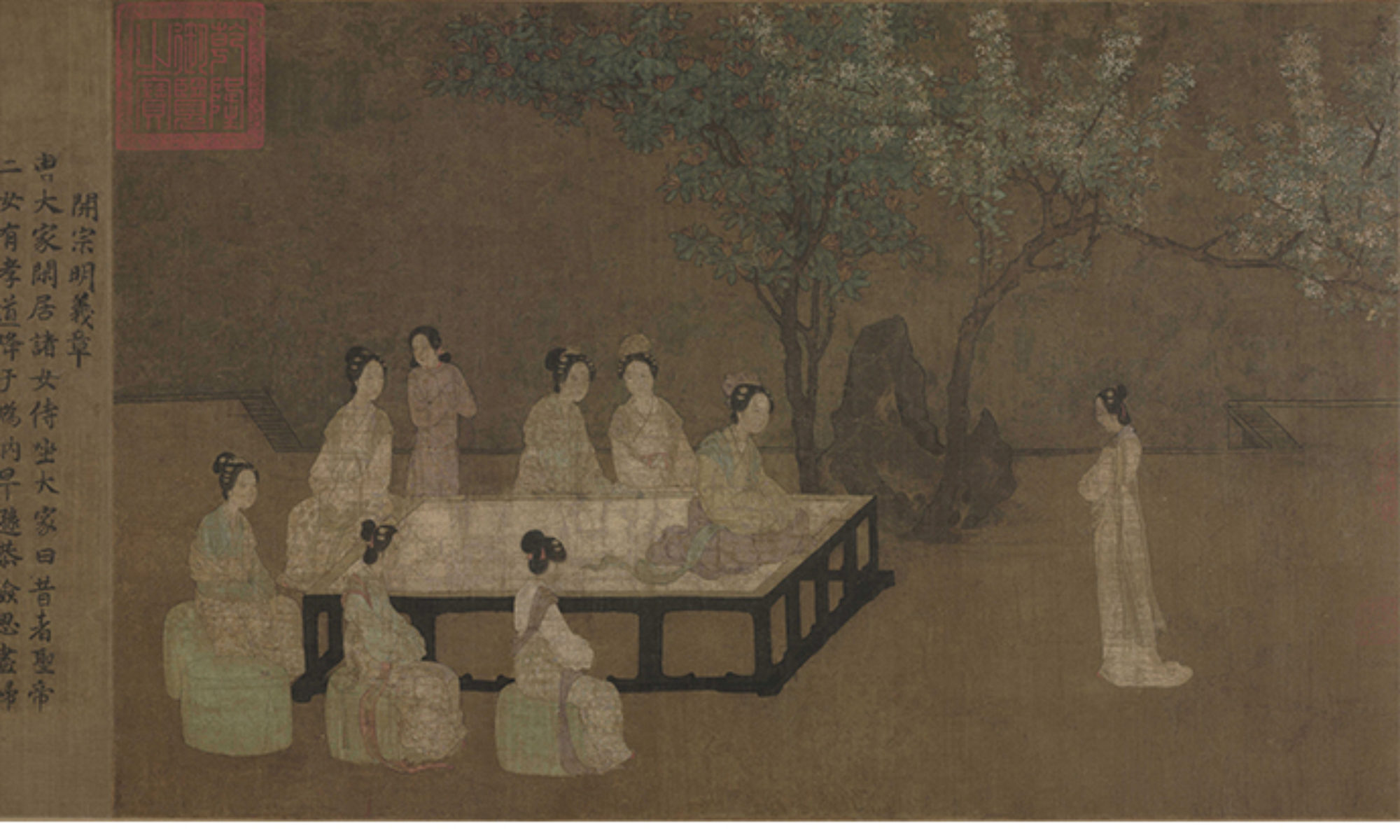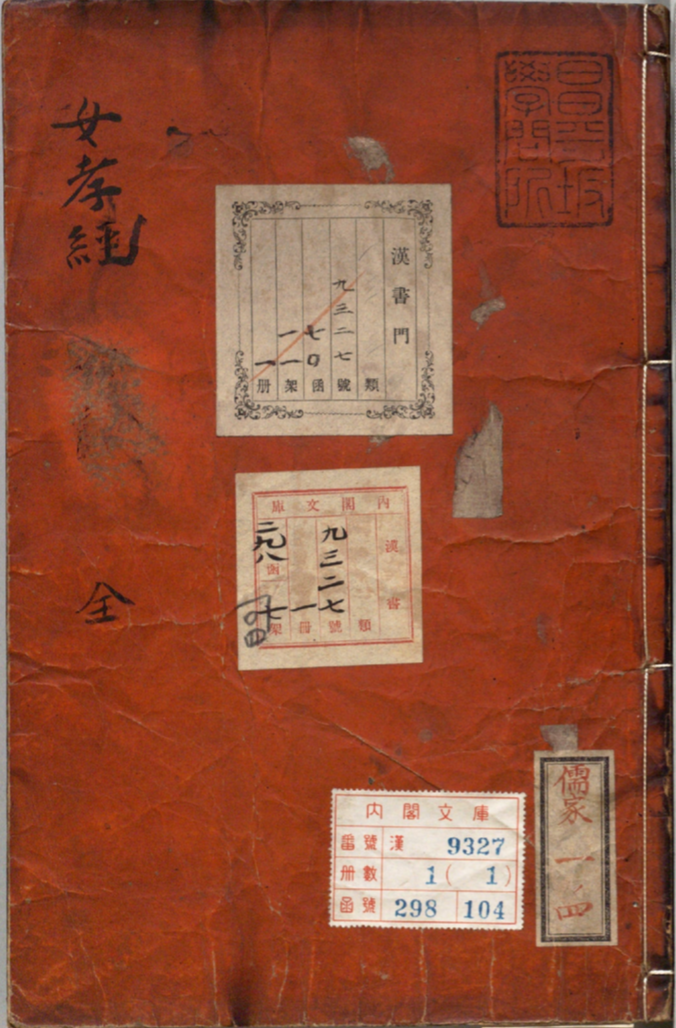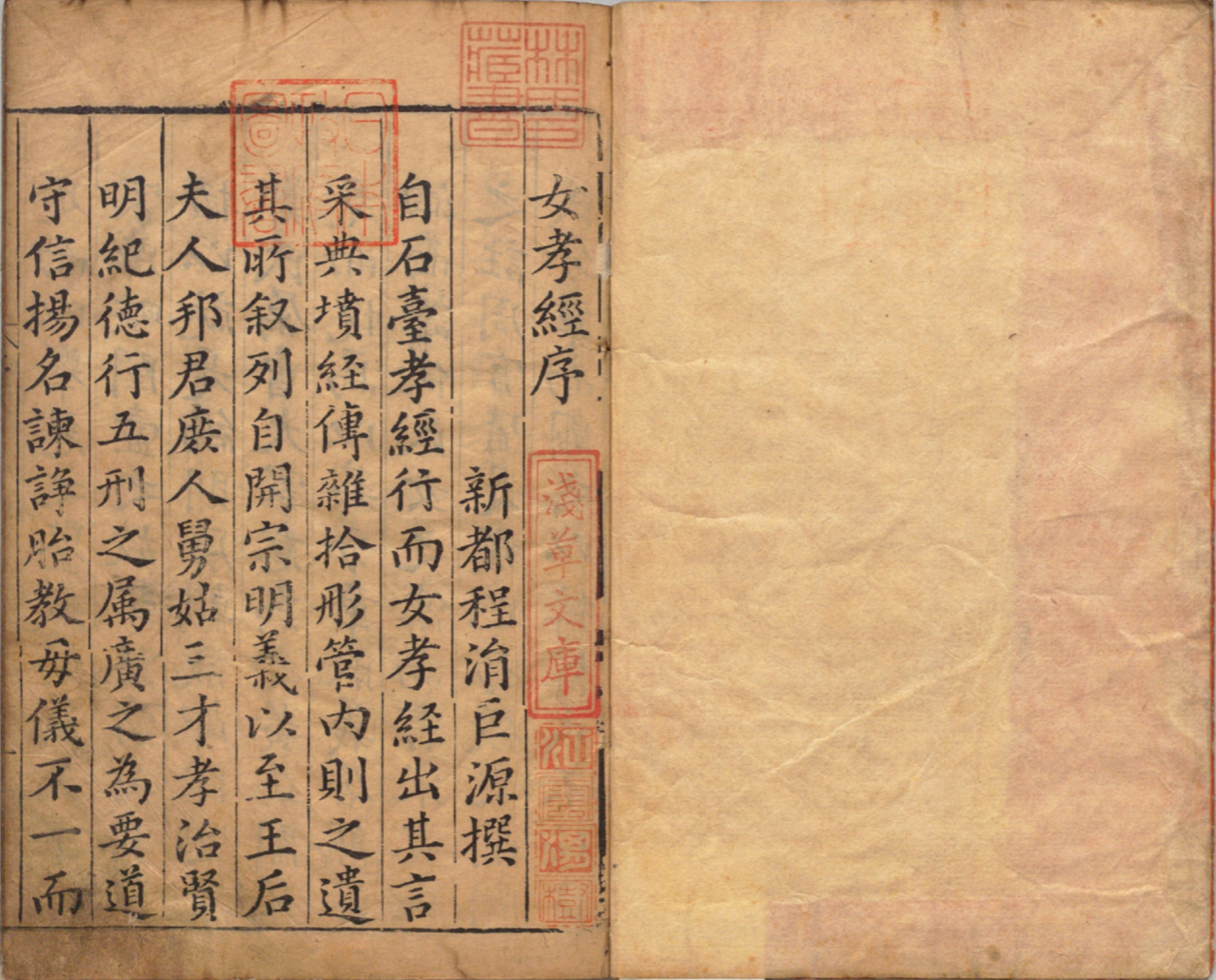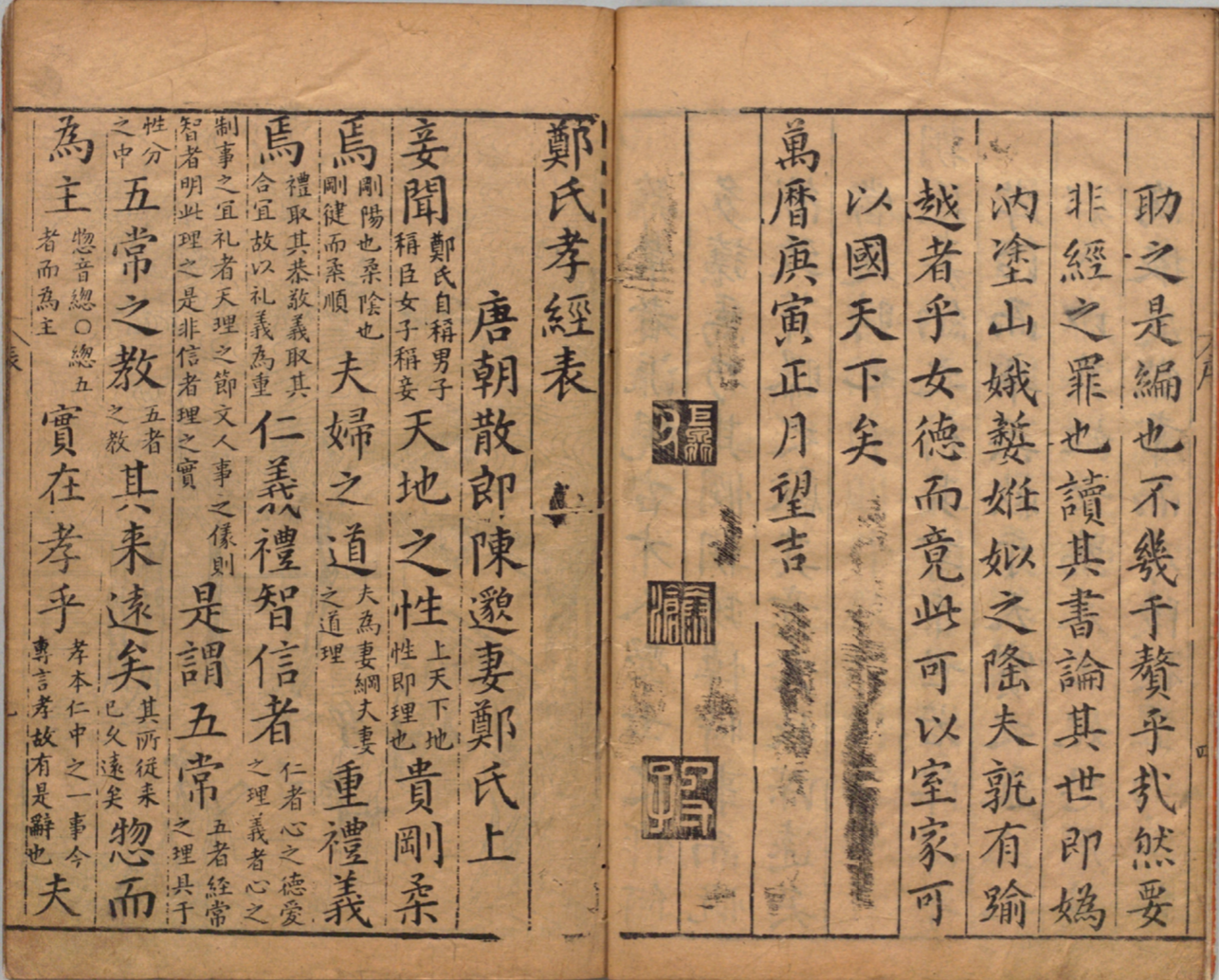The Ladies’ Classic of Filial Piety (Nü Hsiao Ching) is a work of educational Confucian literature that prescribes a strict Confucian morality code of behavior for women. The texts deal with propriety and filial piety as well as rules of behavior on the part of women, and the classic is a counterpart to the Men’s Classic of Filial Piety (Hsiao Ching 孝经). The author of the Ladies’ Classic of Filial Piety literature is a woman surnamed Zheng (郑氏) in the mid-Tang Dynasty (618-907 CE). Madame Zheng is the wife of the Shanlang Houmoo-chen miao (散郎 侯莫陈 邈) during the Tang Dynasty. She writes the text to educate her niece, who is one of the emperor’s concubines, Yong Wang Fei (永王妃). The literature initially contains eighteen sections. It manifests filial piety as the supreme virtue required of everyone in society. Until the Yuan Dynasty(1279-1368), The Song Dynasty History: Art and Literature (Songshi Yiwenzhi) firstly mentions the literature and Madame Zheng. However, the book provides the meager information available concerning Madame Zheng. She may be the first author to be direct in proposing that women’s moral power is comparable to men’s. Some scholars question Madam Cheng’s gender and make a hypothesis that the real author is male, they hypothesize the real author utilizes the female authorship to educate women more effectively, but the assumption cannot be supported by adequate evidence. Julia K. Murray researches the origins of Ladies’ Classic Filial Piety literature. She states the Admonitions for Women (Nu Chieh女则), the Classic of Filial Piety (Hsiao Ching孝经), and Lieh Nu Chuan(列女传) are sources of the Ladies’ Classic Filial Piety literature by comparing the content of texts, formats, narrative structure, and central figures.
The Ladies’ Classic of Filial Piety scrolls with the adaptions from the literary texts only interpret the first nine sections in the form of visual representation, mounted in an arrangement of alternating texts and images. The translation of the first nine sections are “The Starting Point and Basic Principles,” “Empress and Imperial Consorts,” “Noble Ladies,” “Wives of Feudal Lords,” “Common People,” “Serving the Parents-in-law,” “The Three Powers,” “Government by Filiality,” “Elucidating Wisdom” respectively. A lot of historical literature of Chinese art record the paintings related to the Ladies’ Classic of Filial Piety literature. Royal catalogues of the calligraphy and paintings in the Song Dynasty and reference of art in the Yuan, Ming, and Qing Dynasties describe the related paintings. The earliest catalogue to the Ladies’ Classic of Filial Piety scrolls is the Nother Song Palace collection of paintings, Xuanhe Huapu (Xuanhe Huapu(ca. 1119-1125).
There are five different versions of the Ladies’ Classic Filial Piety illustrations, including two existing scrolls (collected in Beijing Palace Museum and Taibei National Palace Museum), other two known as the reproductions of the original one, and the last one only existing in historical records with descriptive details. Scholars from the Beijing Palace Museum state that the painter of the Beijing version is anonymous in the Southern Song Dynasty. The Taibei version has the traditional inscription showing the Southern Song emperor Gaozong as the calligrapher and Ma Hezhi as the painter.



